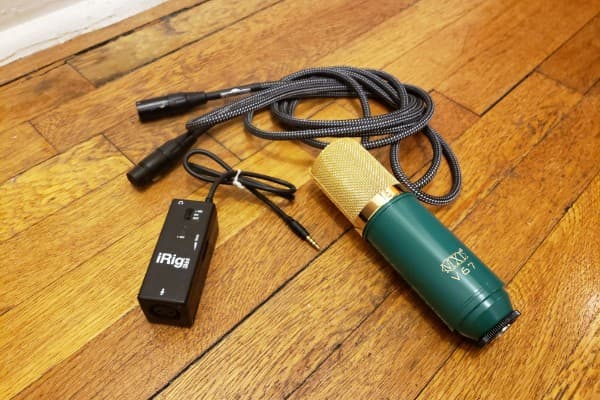If you’ve followed this blog, you know I use an audio interface and microphones, rather than a USB microphone. However, there are lots of benefits to a USB microphone for light audio recording. But I’ll go through why I personally don’t think it’s quite it.
Nevertheless, in this post, we’ll look at both in detail, and see where we land.
Say hi to the audio interface
Firstly, an audio interface is a box that plugs into your computer via USB. Then, it converts audio signal to digital signal that your computer can interpret, and record as a digital file.
Significantly, I say usually, because sometimes they connect to your computer via Firewire, or even the line in to your headphone jack.
At the present time, Some modern audio interfaces are designed for smartphones. So they’re not just for computers anymore.
To conclude, the key features of an audio interface are:
- XLR input, jack plug input, or a combination of both
- A USB or other connection to your computer or smartphone
- A control for level or gain to control the input volume, so whatever microphone or instrument you have plugged in doesn’t clip
Say hi to the USB microphone
USB microphones haven’t been around for as long as audio interfaces.
I can’t pinpoint an exact date, but I did find reference to one as far back as 2005. They originated as a cheaper and easier, plug ‘n’ play alternative to audio interfaces.
As time passed, more microphone manufacturers got in on it. And now, there are some relatively high end models available.
The key feature of a USB microphone is a USB connection to your computer.
Audio interface: pros and cons
| Versatility: You’re not restricted to a single type of microphone – you want to swap a large diaphragm condenser for a ribbon mic? Cool! Just swap the mics! | Cost: You need three separate items – audio interface, XLR cable, and a microphone; there’s a good chance that the cost of those will be more than a single USB microphone |
| Control: The gain or level control prevalent on most audio interfaces makes managing and controlling input levels significantly easier | Options: The high number of audio interfaces on the market, means there’s a high number of opinions about which is the best; trawling through opinions – just like the ones expressed on this very website – isn’t always fun |
| Inputs: You can have more than one input if you need, and those inputs can be for microphone or instruments, or both | Connections: By this, I mean that it can be a fiddle getting everything to hold hands – your interface via USB into your computer or smartphone; your DAW to find your interface; connect your headphones or monitors; plug the mic into the interface… it all adds to set up time |
USB microphone: pros and cons
| Simplicity: You literally plug in this single peripheral device, and away you go | Simplicity: This simplicity makes it significantly less versatile than other options |
| Cost: While high-end USB microphones are available, you can get ones that will be significantly cheaper than the audio interface route | Inputs: Usually, there are none; this makes it difficult to multitrack; for example, play an instrument while singing, and record them on separate tracks in your DAW |
| Latency: If you record with the same microphone in the same room, latency issues should be reduced to a minimum | Quality: It’s not that USB microphones – especially newer, higher end ones – are bad, but it’s generally a given that things focused on doing one thing are better quality; for example, a microphone focused on being a microphone |
Sooo… which is right for you?
Although this is a vague answer, but whichever of those sound most relevant to what you’re working on.
Audio interface
Personally, I think if you’re producing music, an audio interface and microphone(s) is the only way to go.
- Multiple inputs if you need
- More scalable
- More control
USB microphone
However, if you’re producing a podcast rather than music, I think a USB microphone is a far more applicable piece of gear.
- You can focus on talking into your microphone, rather than fiddling too much with gear
- Keeps your equipment focused
Ideas for light audio recording
Given these points, here are some ideas for audio interfaces and USB microphones for light audio recording.
Audio interfaces
|
|
|
|
|---|---|---|
 |  |  |
|
|
|
USB microphone
|
|
|
|
|---|---|---|
 |  |  |
|
|
|
Conclusion
To conclude, you should now have a better idea of the difference between audio interfaces and USB microphone. Additionally, you should be able to make a decision on which is best for your needs.
As can be seen, either is good, but circumstances may determine which is best.
Another key point is cables: it’s easier to get an XLR cable that will go from one side of the room to another than a USB cable.
At any rate, if you’re still not sure, I recommend going to your local pro audio retailer and playing with stuff. Hold them in your hands. Feel it.
While I did learn more about USB microphones in writing this post, I’ll be sticking with the rig below for now.

Moreover, share your own light audio recording thoughts and experiences! There’s a Facebook group, a Subreddit, Twitter and Instagram.
Also, feel free to shoot me a coffee.
